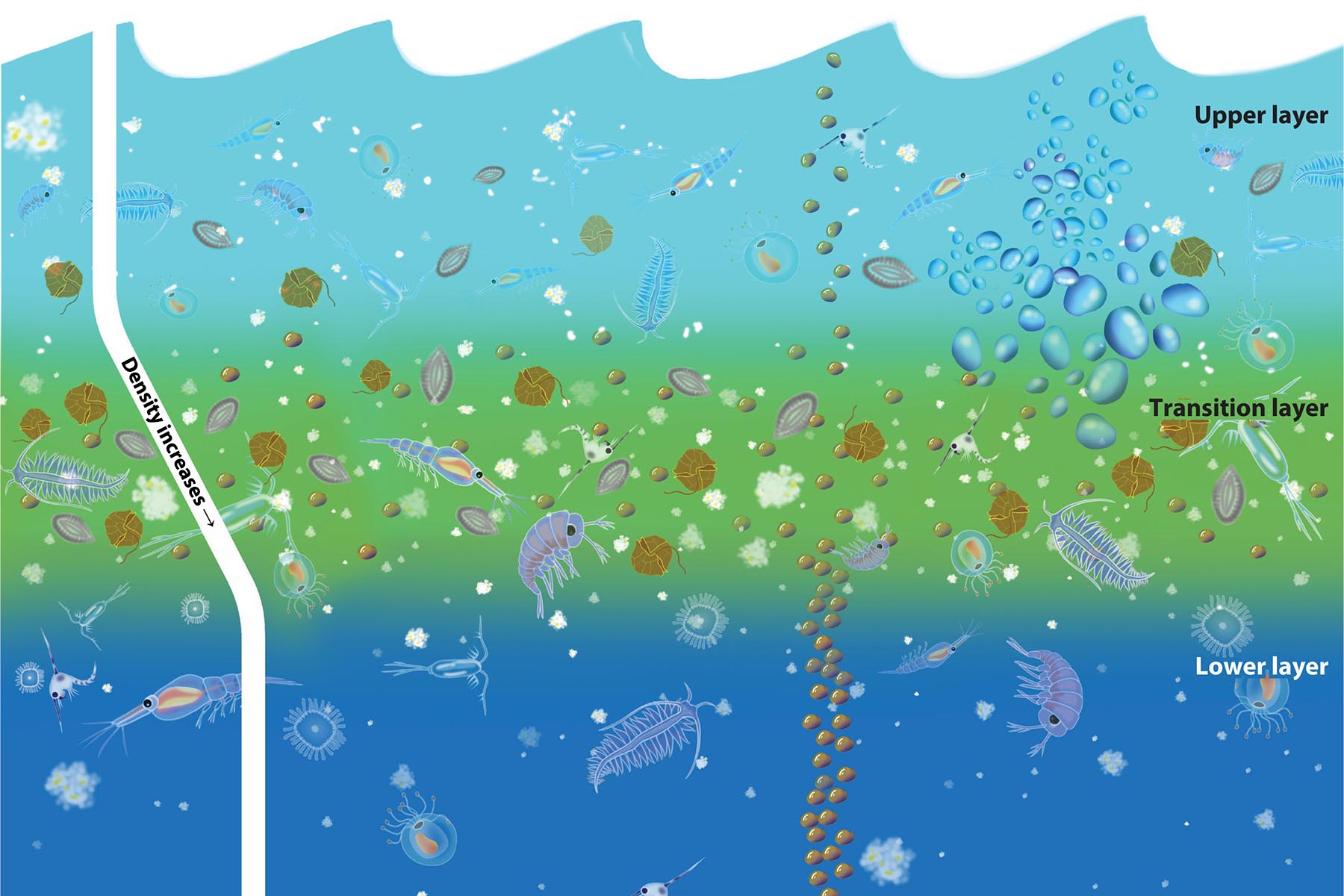Understanding the impact of ocean layers on climate change

“My research group focuses on fluid dynamics,” said Arezoo Ardekani, professor of mechanical engineering. “For the last few years, we have focused on the motion of small particles through fluids. These could be rigid particles like microplastics; motile microorganisms like krill or plankton; or even drops and bubbles.” For example, Ardekani published research about the Deepwater Horizon oil spill, where the fluid dynamics of surfactants led to microorganisms being attracted to the oil spill.
As it turns out, predicting those particle movements in the ocean is very complex.
“In oceans and lakes, there is a top layer that is warmer because it’s exposed to the sun,” said Ardekani. “Then as you go down, the temperature decreases, and the water becomes more dense. If salt water is involved, that salinity also affects the water’s density as you go through the layers. The combination of these characteristics has a big impact on how particles and microorganisms travel through the water.”
The Annual Review of Fluid Mechanics reached out to Ardekani and her team to write an omnibus review of how these layers of density changes affect the motion of particles. That research has now been published in the 2023 edition of the journal.
In general, the stratification of fluid density restricts vertical motion. That’s significant, because microorganisms travel up-and-down daily between the upper and lower layers of the ocean on a mass scale. “As these microorganisms encounter density changes, it enhances the drag they experience,” said Ardekani. “For those that have active swimming mechanisms, the different layers of density can affect their swimming dynamics in different ways. It also affects the collective motion of organisms that travel as part of a big group.”
Microorganisms are vital in studying climate change because half of the oxygen on earth is produced by microscopic organisms like phytoplankton. But Ardekani describes why it’s not that simple. “Tracking the movement of phytoplankton is vital for a healthy planet,” she said, “but there can also be harmful algal bloom, which can be toxic and endanger the water supply. Or if they die, their decomposition may create an oxygen-depleted dead zone.”
In the same way, dead microorganisms and other bits of organic matter tend to drift downwards to settle at the bottom of the ocean. This “marine snow” contains carbon. If stratification increases, then the downward movement of these particles decreases – making this carbon-sink mechanism less effective.
“There are so many factors that feed into this,” she continued. “Even a heavy rain storm can cause complex fluid dynamics that affect the travel of these microorganisms. But one thing we do know is that, in general, climate change is increasing the stratification in our oceans, lakes, and reservoirs. That’s why it’s so important to understand these fluid dynamics.”
In the future, Ardekani also plans to apply this research to microplastics, tiny particles of man-made plastic that end up in the oceans, contaminating the food supply of fish and other marine animals. “There are many factors that cause microplastics to accumulate,” she said. “Biofouling can occur, making them denser; or electrostatic interaction between clay and microplastic could make them larger. It’s a complex problem.”
She continued: “The ocean is a big body of water, but an important way to understand it may be to study the movements of tiny particles.”
Writer: Jared Pike, jaredpike@purdue.edu, 765-496-0374
Source: Arezoo Ardekani, ardekani@purdue.edu
Motion in Stratified Fluids
Rishabh V. More and Arezoo M. Ardekani
https://doi.org/10.1146/annurev-fluid-120720-011132
ABSTRACT: Density stratification due to temperature or salinity variations greatly influences the flow around and the sedimentation of objects such as particles, drops, bubbles, and small organisms in the atmosphere, oceans, and lakes. Density stratification hampers the vertical flow and substantially affects the sedimentation of an isolated object, the hydrodynamic interactions between a pair of objects, and the collective behavior of suspensions in various ways, depending on the relative magnitude of stratification, inertia (advection), and viscous (diffusion) effects. This review discusses these effects and their hydrodynamic mechanisms in some commonly observed fluid–particle transport phenomena in oceans and the atmosphere. Physical understanding of these mechanisms can help us better model these phenomena and, hence, predict their geophysical, engineering, ecological, and environmental implications.
